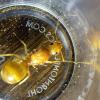Here are the photos:
- Formiculture.com
- Forums
- Gallery
- Members
- Member Map
- Chat

When are around where was this queen caught? Looks like Camponotus Maritimus to me
This is most likely C. vicinus. C. maritimus is extremely shiny, which this specimen is not.
Hi there! I went on a 6 month or so hiatus, in part due, and in part cause of the death of my colonies.
However, I went back to the Sierras, and restarted my collection, which is now as follows:
Aphaenogaster uinta, Camponotus vicinus, Camponotus modoc, Formica cf. aserva, Formica cf. micropthalma, Formica cf. manni, Formica subpolita, Formica cf. subaenescens, Lasius americanus, Manica invidia, Pogonomyrmex salinus, Pogonomyrmex sp. 1, Solenopsis validiuscula, & Solenopsis sp. 3 (new Sierra variant).
This is a shot in the dark, but the only other tanaemyrmex species I see on CA records that matches this remotely is Camponotus dumetorum. Maybe that’s what it is?
Could also be one of the many ‘vicinus’ varieties found everywhere
Yeah, the queen looks similar to Camponotus dumetorum, only difference is the legs aren't really the same colour, at least from the photos of C. dumetorum queens I could find.
Nylanderia parvula - 4 queen polygynous colony with larvae + devoloping workers
Camponotus pennsylvanicus - 1 queen with 2 cocoons, and a few larvae and eggs
Tetramorium immigrans - 3 colonies, first nanetics!
Formica pallidifulva - 1 queen, 8-10 eggs
Tetramorium atratulum - 1 queen with roughly 17 host workers
![]() Pheidole pilifera - 1 queen! recently caught!
Pheidole pilifera - 1 queen! recently caught! ![]()
Solenopsis Molesta - 2 queens so far, polygenous set-up
---------------------------------------------------
My Ant Journal - yibsi’s Wonderful Ant Keeping Journal 5-22-21 - Ant Keeping Journals - Ants & Myrmecology Forum (formiculture.com)
My T. Atratulum Journal - https://www.formicul...ontinued/page-2
If you get a better straight on picture of the face you can tell if it is C. dumetorum, the base of the antannae scape will flatten and have a bit of a protrusion; it's very obvious. Color also isn't really a good thing to go off of unless it is a very distinct coloration like C. essigi queens that have a dark second thorax scale or C. ocreatus majors having dark pigmentation on the legs.
Size? Location found? Use the provided template in the pin please.
https://www.formicul...t-a-new-thread/
At first glance it looks like a dark colored C. vicinus. Have a few that look exactly like that.
EDIT: This is not C. dumetorum, they have long crazy fuzzy hairs, esp near the gaster.

Edited by nurbs, May 13 2021 - 3:53 PM.
Instagram:
nurbsants
YouTube
California Ants for Sale
Unidentified Myrmecocystus
https://www.formicul...ls-near-desert/
Undescribed "Modoc"
https://www.formicul...mp-ca-5-4-2017/
Camponotus or Colobopsis yogi:
https://www.formicul...a-ca-1-28-2018/
Camponotus us-ca02
https://www.formicul...onotus-us-ca02/
Unidentified Formica
https://www.formicul...l-ca-6-27-2020/
Pencil Case and Test Tube Formicariums
https://www.formicul...m-and-outworld/
Bloodworm Soup
https://www.formicul...bloodworm-soup/
You need clear, in focus shots of the cheeks to easily distinguish vicinus and dumetorum. You cannot tell with these images
.
Hi there! I went on a 6 month or so hiatus, in part due, and in part cause of the death of my colonies.
However, I went back to the Sierras, and restarted my collection, which is now as follows:
Aphaenogaster uinta, Camponotus vicinus, Camponotus modoc, Formica cf. aserva, Formica cf. micropthalma, Formica cf. manni, Formica subpolita, Formica cf. subaenescens, Lasius americanus, Manica invidia, Pogonomyrmex salinus, Pogonomyrmex sp. 1, Solenopsis validiuscula, & Solenopsis sp. 3 (new Sierra variant).
0 members, 1 guests, 0 anonymous users